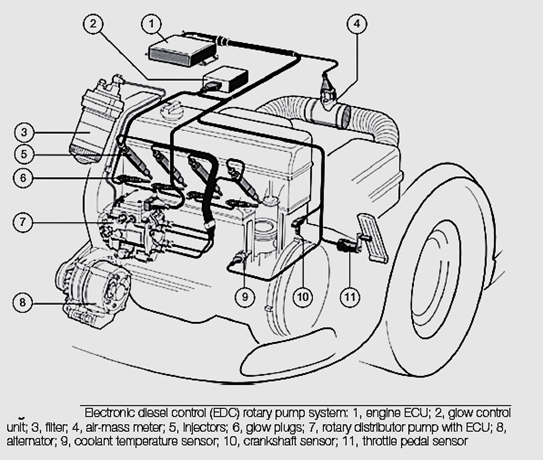←
Automobile Engineering
Rotary Pump System
Introduction:
Bosch rotary VR pumps are used on high-speed direct injection diesel engines for cars and light commercial vehicles. They are radial-piston distributor injection pumps having opposing plungers that are forced inwards by cam lobes on the inside of a cam ring to produce high pressure, which can be up to 1400 bar in some applications.
Electronic diesel control

- The cam is located in the pump body and the plungers are in the rotor driven by the pump spindle.
- Four-cylinder engines have two plungers and four cam lobes. Six-cylinder engines have three plungers and six cam lobes.
- The pump is driven from the engine at half crankshaft speed.
- A low-pressure feed to the injection pump is provided by a submerged electrical pump in the fuel tank.
- This provides for priming and positive pressure in the injection pump. In common with all diesel fuel systems, a fuel filter and water trap is used to ensure that only very clean fuel is delivered to the pump.
- Return pipes are used for excess fuel leakage, for purging the pump and for lubrication of the injectors.
- Inside the distributor pump is a vane type pump, which is used to produce the pump body pressure. Pump body pressure is used for charging the high pressure chamber between the plungers and for injection advance.
- A pressure control valve is used to prevent excessive pressure. It is a spring-loaded plunger that is lifted by hydraulic pressure to expose ports in the valve bore.
- This will then allow fuel to flow back to the inlet side of the vane-type pump. An overflow throttle valve, in the pump housing, is used to allow a defined quantity of fuel to flow back to the fuel tank at all times. This provides some cooling in the pump and venting of air during pump priming.
- A second, larger overflow bore in the valve opens at a given pressure to allow a flow of fuel from the distributor head.